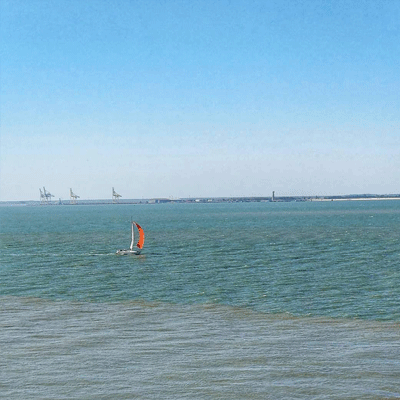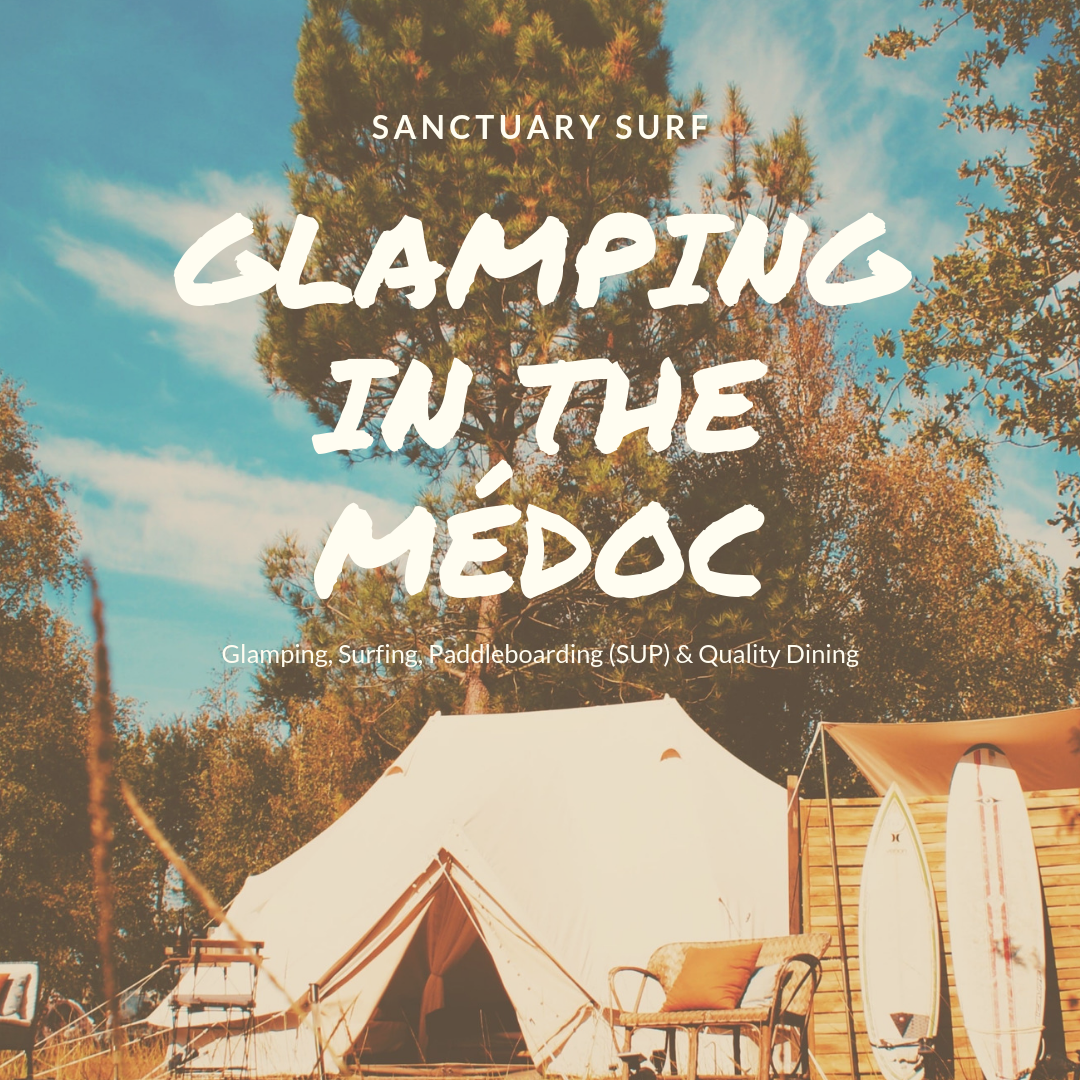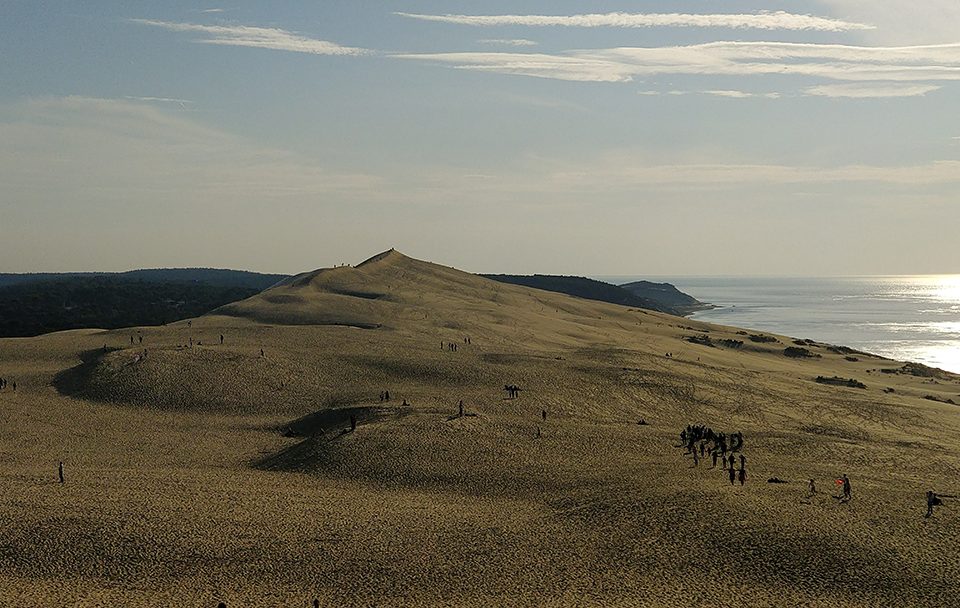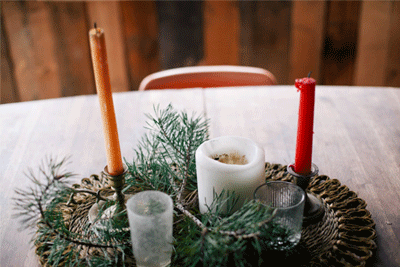
BORDEAUX AIRPORT – TRAM CONNECTION CONFIRMED
09/12/2018
BORDEAUX-MÉRIGNAC AIRPORT SET FOR RENOVATIONS
15/12/2018The Gironde Estuary is the largest in Europe and holds many secrets. Namely, the Right Bank is a an amazing treasure trove of hidden gems.
Written by: Marie HALLIER / Bordeaux Cognac Tour Guide
The right bank of the Gironde Estuary offers landscapes totally different from those of the Left Bank (Médoc). Once we cross the largest estuary in Europe from the left to right: we leave a low lying land coastal marshes and the world famous vineyards. On the right bank we discover a hilly region protruding with abrupt limestone cliffs, a stark contrast to what we experience on the other side of the river.
To understand the contrast between these two landscapes separated by only a few kilometres, we must understand how the estuary was formed back in a time when the limestone bedrock broke apart and was divided.
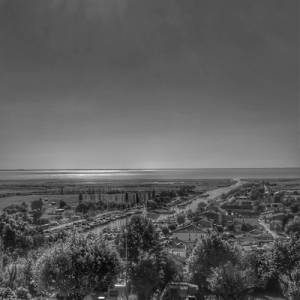
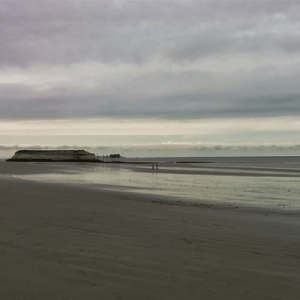
This story begins millions of years ago. The estuary is perched atop of a limestone plateau, which was deposited about 150 million years ago! The landmass was strained by the arrival of the Alps and Pyrenees Mountain ranges, before eventually breaking apart. To the west (the left bank, Médoc) collapsed and was swallowed by the ocean. However, the land to the east (the right bank) rose up with large limestone plateaus forming steep cliffs. The waters and tides rode against these cliffs and in turn saw the Gironde estuary being born.
With the end of the ice age, the sea level rose and the rivers slowed resulting in large beds of alluvium (clay & silt) being deposited across the region. The banks became increasingly regular and stable due to the accumulation of sediment in the creeks and river systems. In some places like Mortagne-sur-Gironde, we can still admire today the ‘dead cliffs’. At the feet of these cliffs, there was so much sediment that accumulated and the water ceased in running.
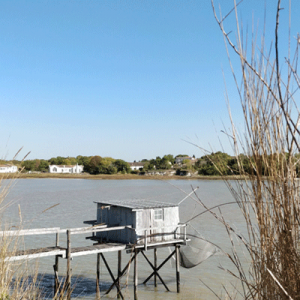
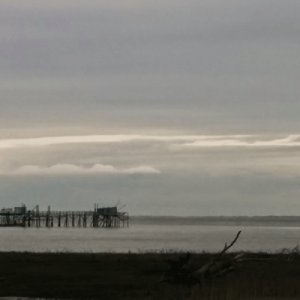
The succession of this phenomena has led to the landscapes of today. Over the centuries men have tried to domesticate. Historically, inhabitants always lived along the banks of the estuary but this is never easy as it is always in a constant state of evolution!
In order to maintain clear navigation for boats on the estuary, authorities are forced to redraw the navigational charts due to the changing depths for passing vessels. They also need to determine where to drag the estuary in order to maintain these navigation channels!
Some 2,000 years ago, marshes formed on both banks of the estuary. However, it is only since the 16th century that the marshes were drained and used for cultivation and farming. Sometimes though, rare occurrences change everything!
For example, near the hamlet of L’Echailler, you can see that the dike protecting the marsh from the onslaught of the estuary was destroyed by a large storm in 1999. It was then decided to let nature take back what is rightfully hers, of which saw the start of the land being returned to the water.
With the blocking and silting up of certain parts of the shore, we saw the necessity of accesses channels being dug in order to maintain port activities.
Other evolutions of the landscape lead us to the appearance of one of the largest reed beds of France in Chenac-Saint-Seurin d’Uzet. Since the 1960s & 1970s, this vast reed bed separates the cliffs of the estuary. It is sometimes nearly 1.5 kilometres wide and serves as a shelter for many species of birds. A real paradise for them but also for their fervent observers!
Other ‘must see’ visits on the Right Bank of the Estuary are these villages and surprising sights:
Suzac Point – Amazing series of blockhouses from the German Occupation in WWII (part of the Atlantic Wall)
Meschers, cliffs and beaches nestled between the rocks that are called here “Conches”
The magnificent village of Talmont-sur-Gironde founded in the twelfth century in the name of the King of England. Stroll the narrow streets, visit it’s Romanesque church and its amazing marine cemetery.
Mortagne-sur-Gironde with its charming harbour, “dead cliffs” and its unique belvédère on the Gironde estuary
The enigmatic “Tour de Beaumont” perched high between St Fort and Mortagne – which served as a landmark for navigating sailors on the waters of the estuary.
About the author:
Marie Hallier is a local tour guide who operates Bordeaux Cognac Tour Guide. She grew up between Bordeaux and the Bassin d’Arcachon but today makes Charente-Maritime her home. She is passionate about the region, wine, Bordeaux & Cognac and has written a book about the estuary of the Gironde. She offers a range of different regional tours, all of which can be viewed here.

